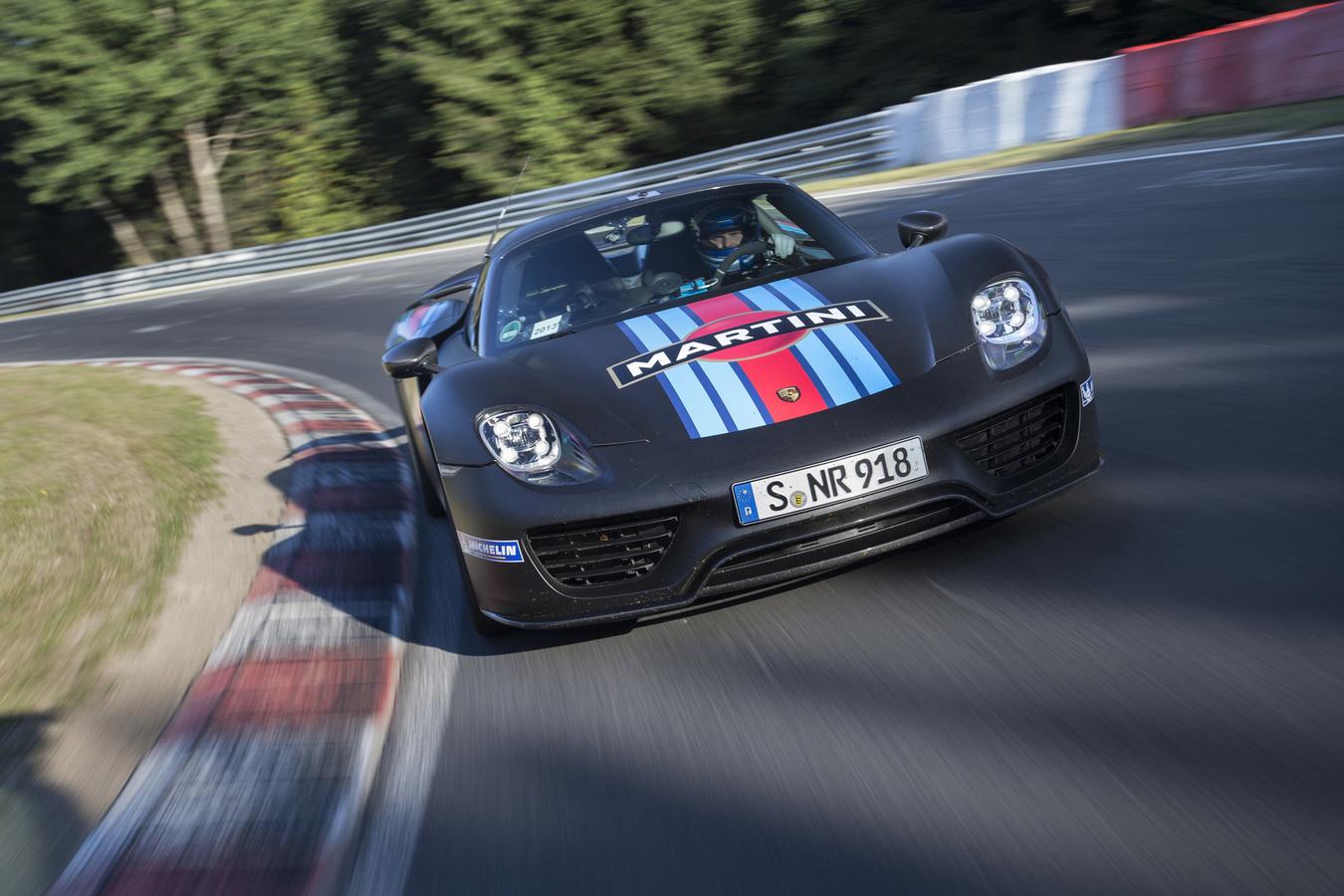The term “hybrid hypercar” is all but engrained in car-speak today, but it would have seemed blasphemous not long ago. Fortunately, the world has come around. We now recognize the performance potential of hybrids alongside their economic benefits, and we have cars like the incredible Porsche 918 Spyder to thank for it.
As of June 19th, the $845,000 two-seater has officially ended its 21-month production run. The last of the planned 918 units rolled off the assembly line in Stuttgart-Zuffenhausen last week, and in true German fashion, it did so right on schedule.
The initial wave of hybrid hypercars was an impressive one, but the Porsche arrived first. The car debuted in concept form at the 2010 Geneva Motor Show, years before the brutal McLaren P1 and extravagant LaFerrari would grace the automotive landscape.
When the trio finally met, it was clear that the cars had a lot in common — each mated high-horsepower gas engines with electric motors for maximum performance power. But like rival siblings, each possessed their own character and style. Where the rear-wheel drive McLaren was unforgiving and raw, the all-wheel drive Porsche was controlled and precise. The LaFerrari was as lavish and aggressive as a lionfish, while the Porsche stayed poised, more in the style of a falcon swooping in on its dinner.
Under the Spyder’s vented engine cover lies a 4.6-liter, 608-horsepower V8 that literally breathes fire. Top-mounted exhausts spout brilliant blue flames when the engine is pushed to its 9,000 rpm redline, sending every iota of available power to the rear wheels. Its V8 makes a beautiful, metallic racket.
The two electric motors, however, do their job in near silence. One sits behind the driver, sending 154 hp to the rear wheels, while also serving as the vehicle’s main generator. Another 125-hp unit sits toward the bow, driving the front axle and decoupling via electric clutch when not in use. The result? A combined 887 hp and 944 pound-feet of torque, which push the car to 60 mph in 2.5 seconds, 124 mph in 7.3 seconds, and to 186 mph in 20.9 seconds. With the optional Weissach performance package, the beast becomes even lighter, faster, and more surreal.
Though the 918’s production run was brief, the German hypercar’s legend will live on in history. In late 2013, the Spyder lapped the Nurburgring in 6:57, becoming the third-quickest production car ever to do so. That’s more than 27 seconds faster than the Nissan GT-R, which isn’t exactly a slowpoke. The Porsche also holds the production car lap record at Mazda Raceway Laguna Seca.
A moment of silence just wouldn’t be appropriate given the subject at hand, so we leave you with Top Gear’s first test of the 918 Spyder, a film that allows the brilliant supercar to stretch its legs, shine, and shout.






